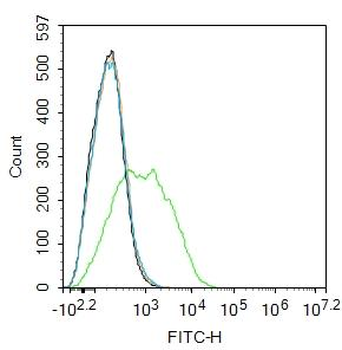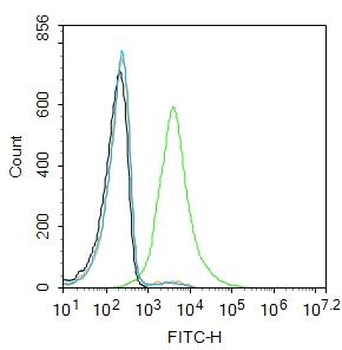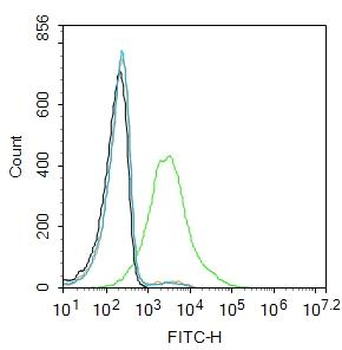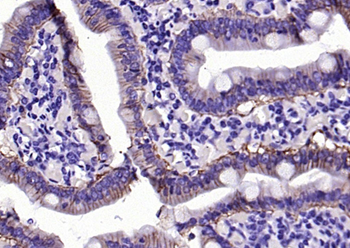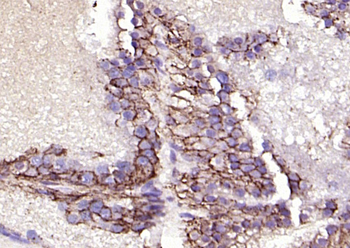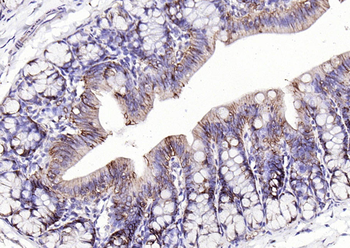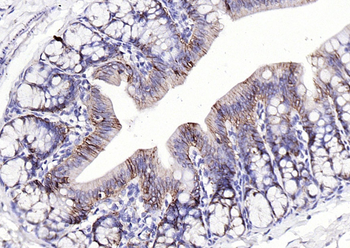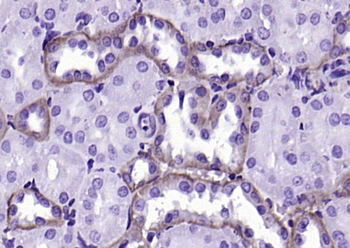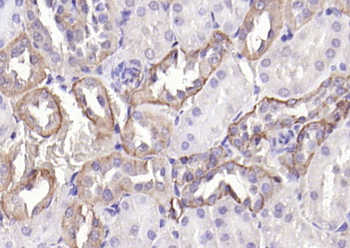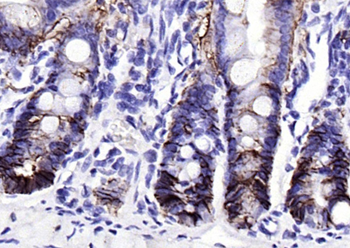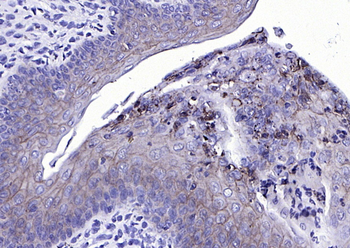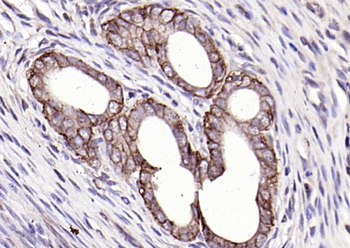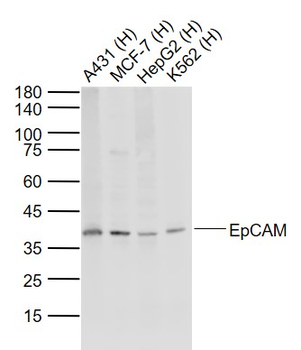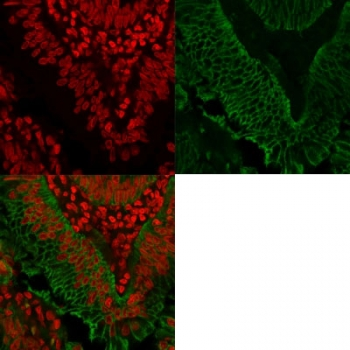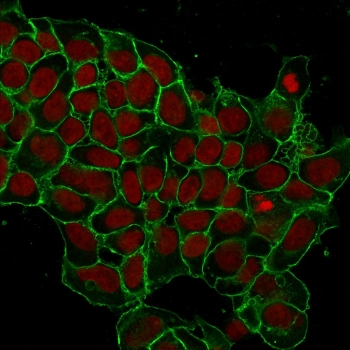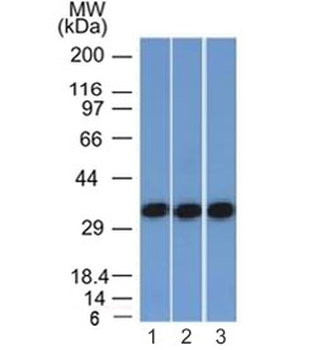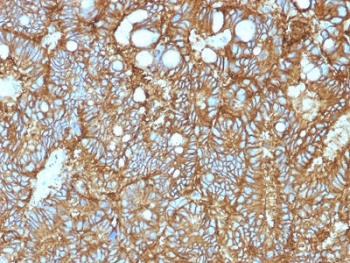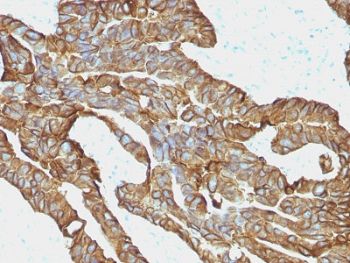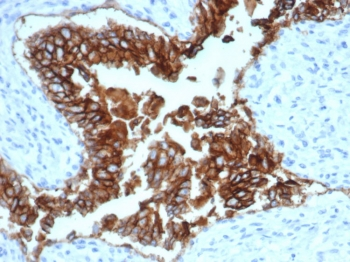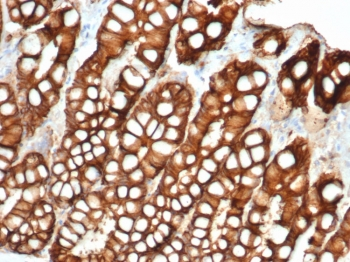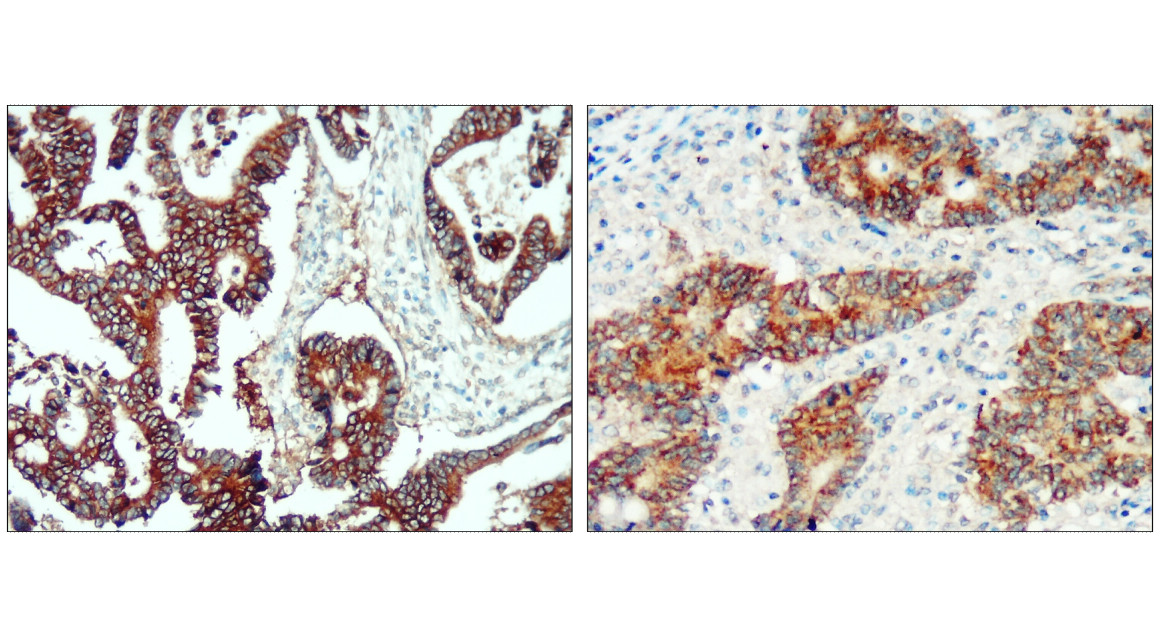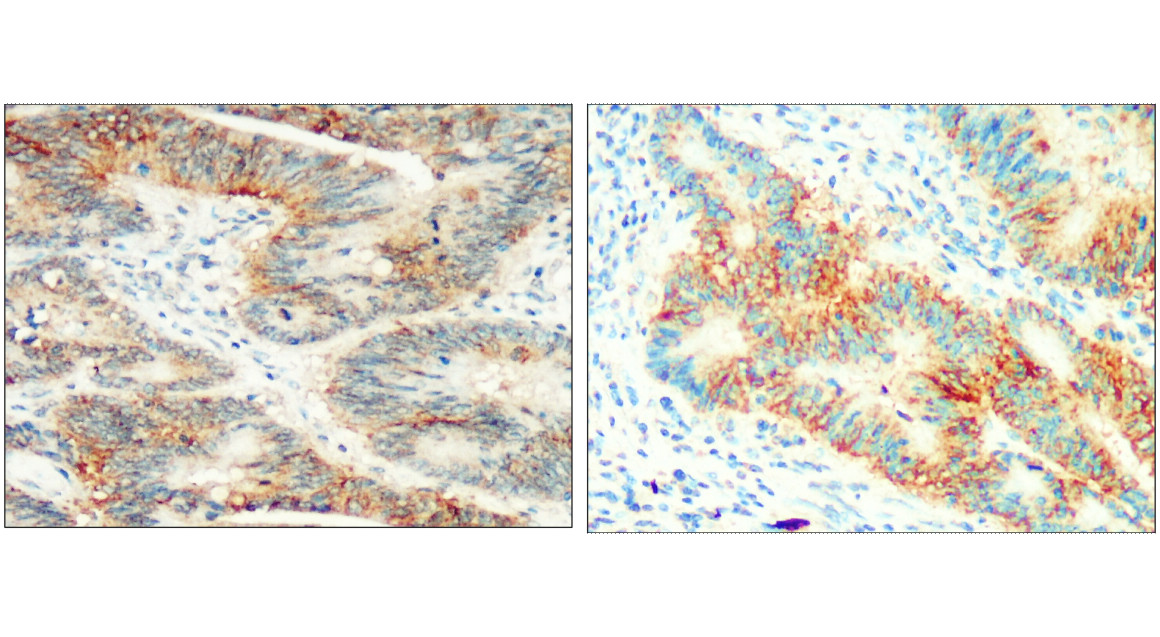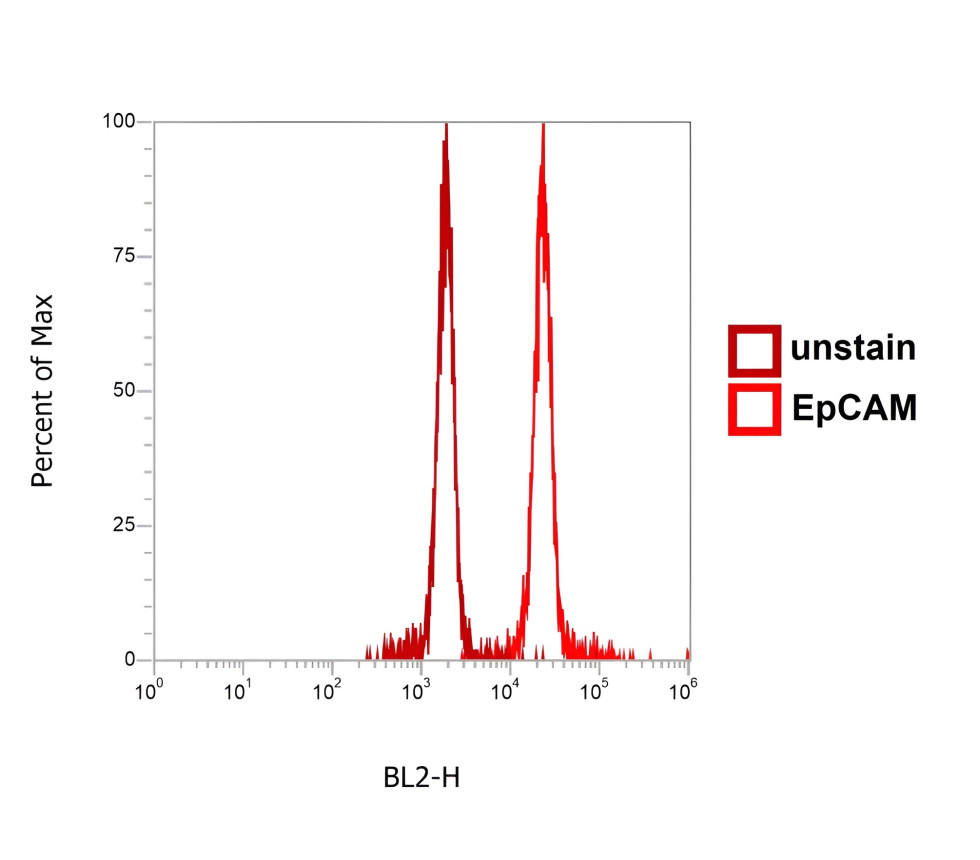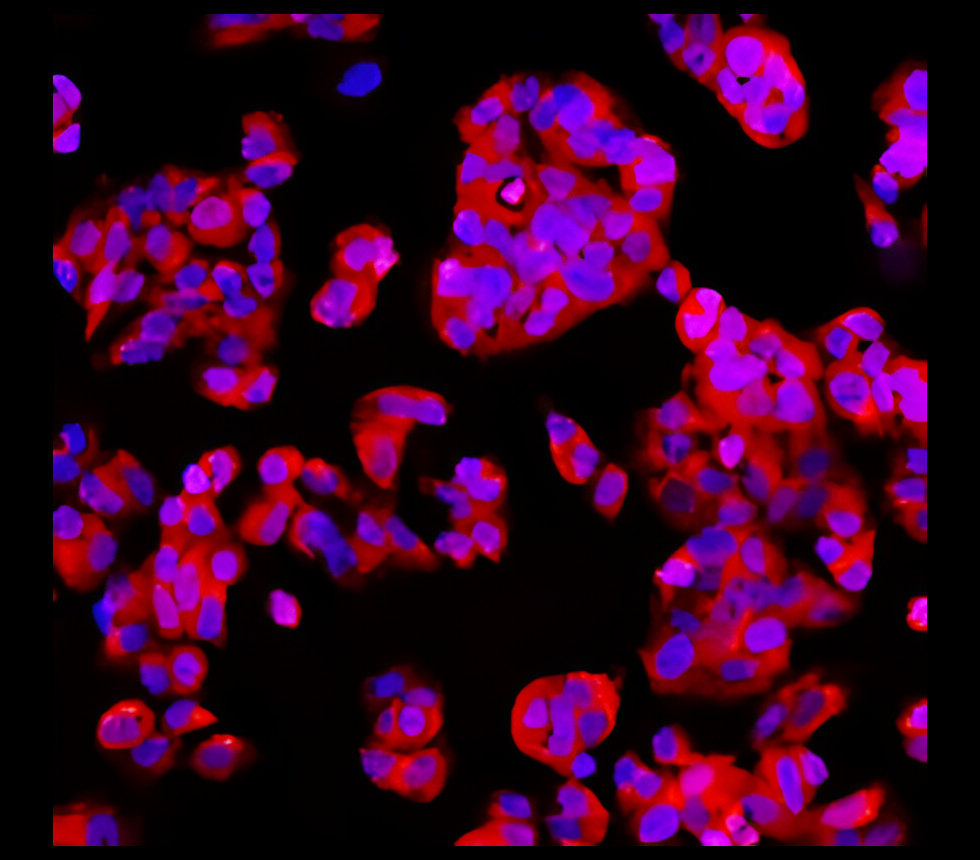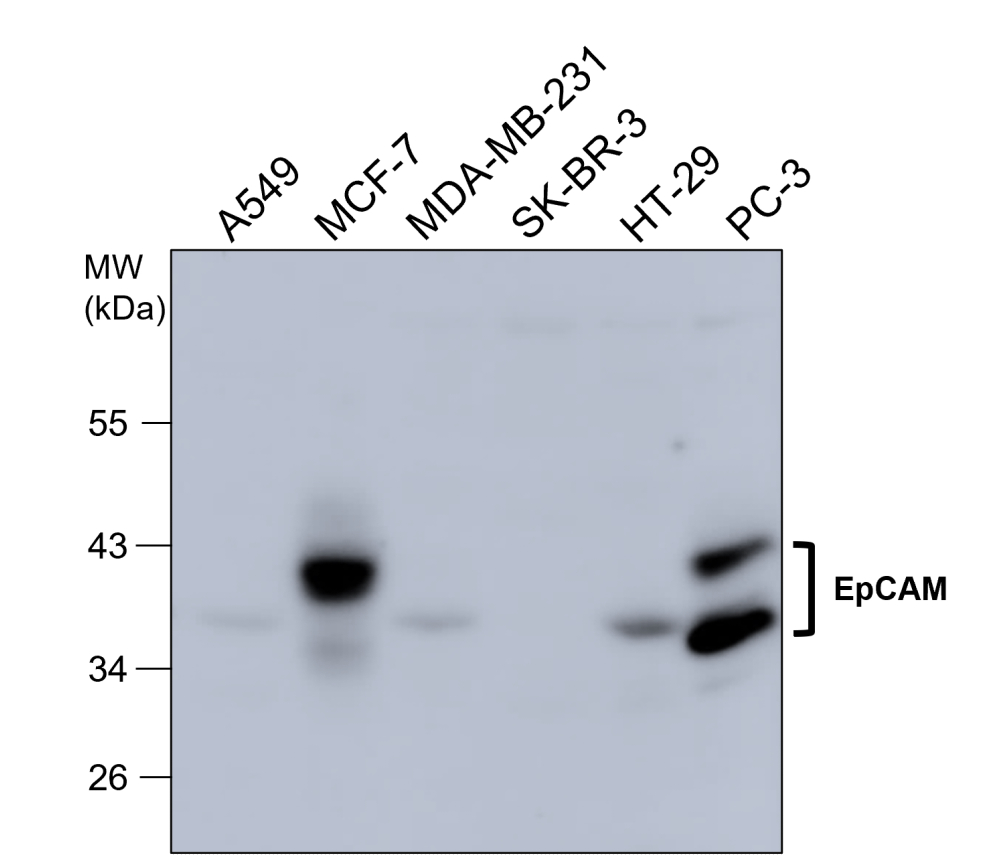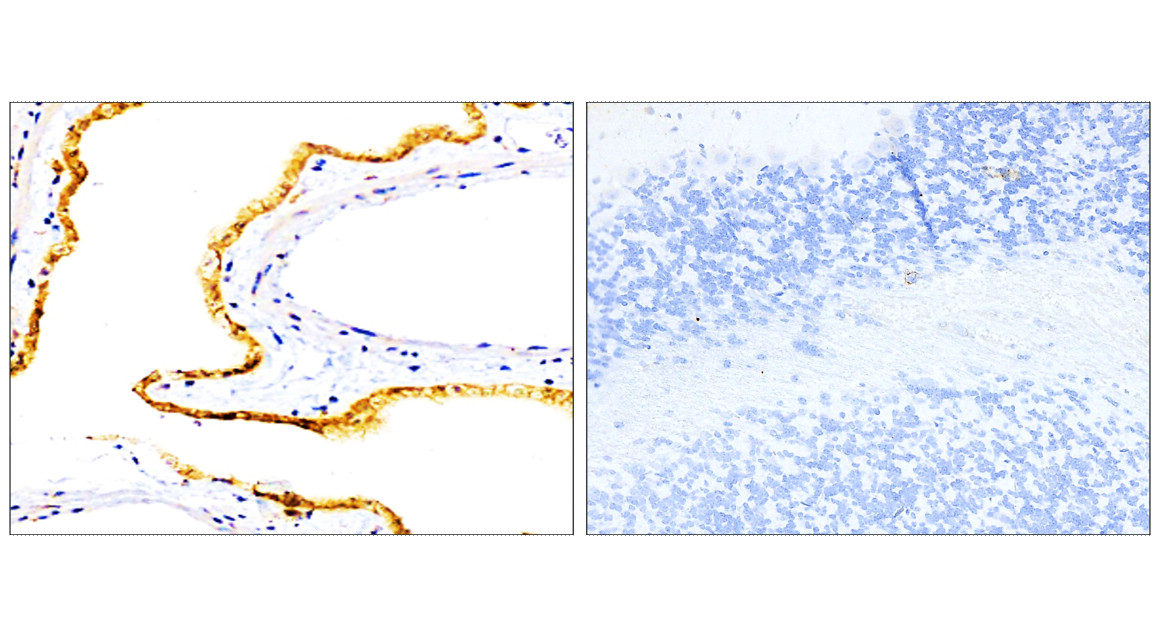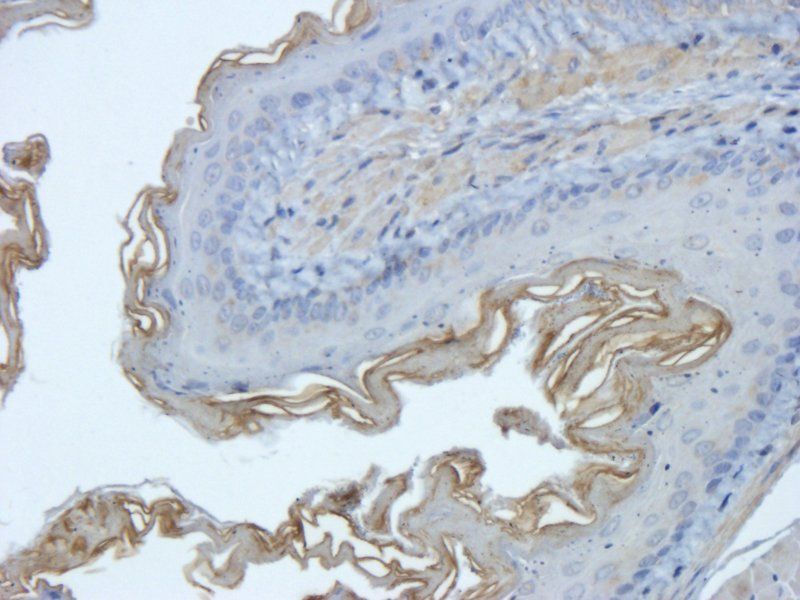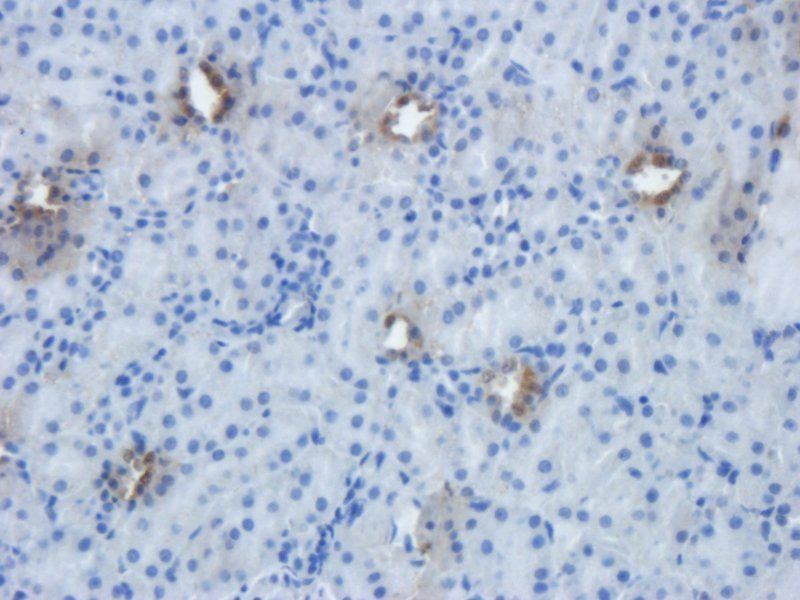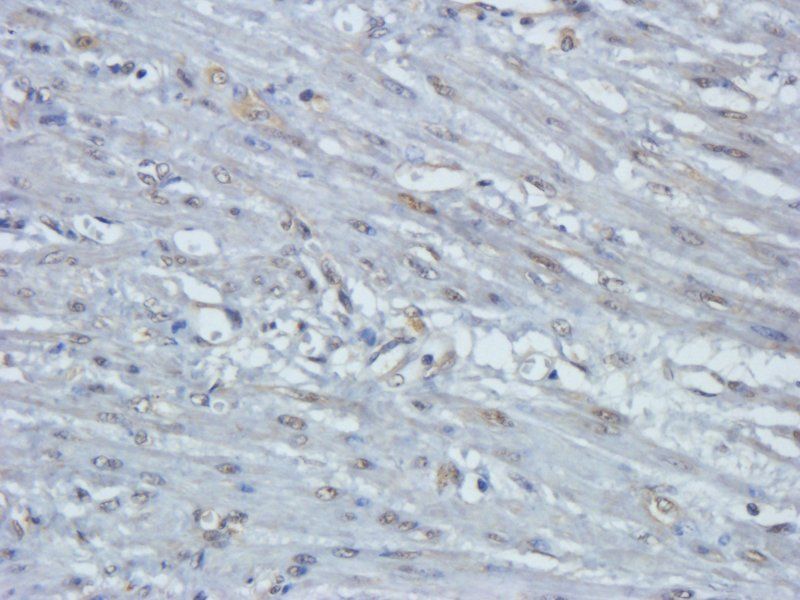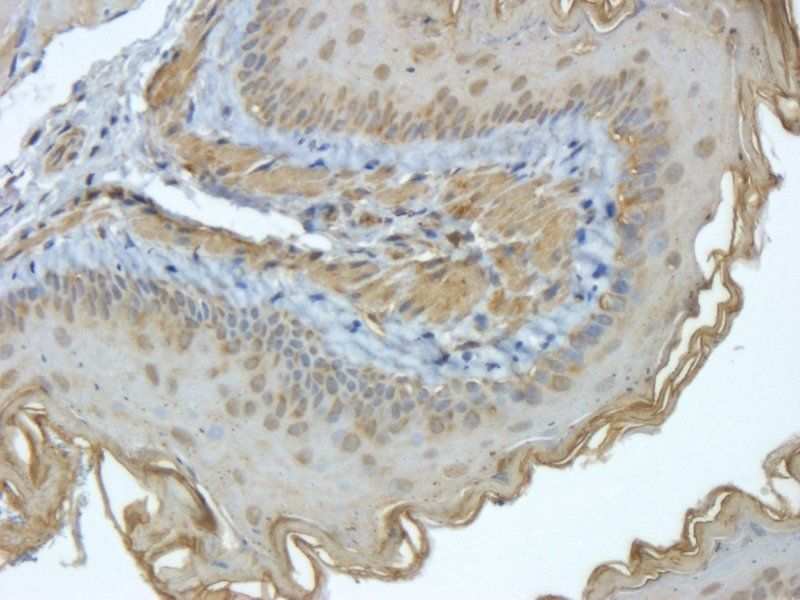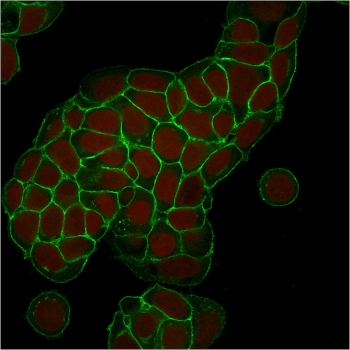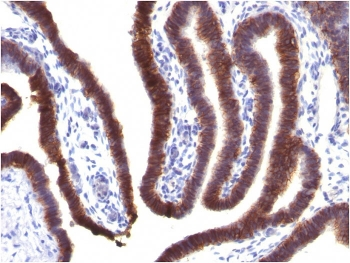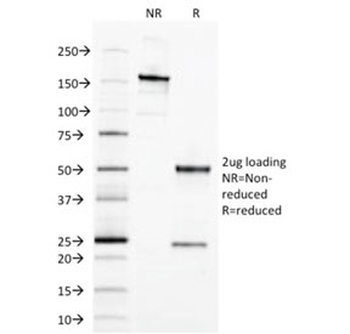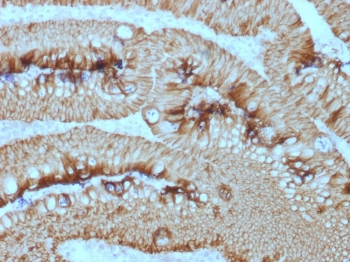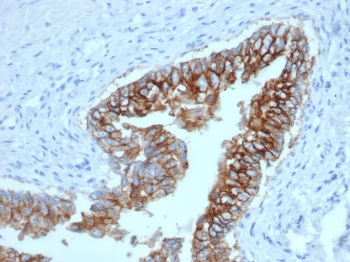You have no items in your shopping cart.
EpCAM Antibody
Catalog Number: orb1823853
| Catalog Number | orb1823853 |
|---|---|
| Category | Antibodies |
| Description | EGP40 is a 40-43kDa transmembrane epithelial glycoprotein, also identified as epithelial specific antigen (ESA), or epithelial cellular adhesion molecule (Ep-CAM). It is expressed on baso-lateral cell surface in most simple epithelia and a vast majority of carcinomas. This antibody has been used to distinguish adenocarcinoma from pleural mesothelioma and hepatocellular carcinoma. This antibody is also useful in distinguishing serous carcinomas of the ovary from mesothelioma. |
| Clonality | Recombinant |
| Species/Host | Mouse |
| Isotype | Mouse IgG1, kappa |
| Conjugation | Unconjugated |
| Reactivity | Canine, Feline, Human |
| Immunogen | Recombinant full-length human protein was used as the immunogen for the EpCAM antibody. |
| UniProt ID | P16422 |
| Tested applications | IHC-P |
| Dilution range | Immunohistochemistry (FFPE): 1-2ug/ml for 30 min at RT |
| Antibody Type | Primary Antibody |
| Clone Number | rEGP40/7334 |
| Formula | 0.2 mg/ml in 1X PBS with 0.1 mg/ml BSA (US sourced), 0.05% sodium azide |
| Storage | Maintain refrigerated at 2-8°C for up to 2 weeks. For long term storage store at -20°C in small aliquots to prevent freeze-thaw cycles. |
| Note | For research use only |

IHC staining of FFPE dog liver with EpCAM / CD326 antibody (clone rEGP40/7334). HIER: boil tissue sections in pH9 10 mM Tris with 1 mM EDTA for 20 min and allow to cool before testing.

IHC staining of FFPE cat colon with EpCAM / CD326 antibody (clone rEGP40/7334). HIER: boil tissue sections in pH9 10 mM Tris with 1 mM EDTA for 20 min and allow to cool before testing.
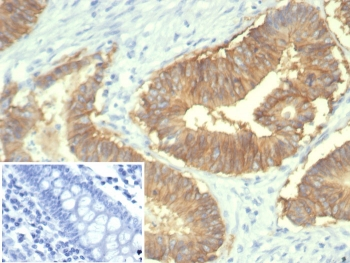
IHC staining of FFPE human colon tissue with EpCAM / CD326 antibody (clone rEGP40/7334). Inset: PBS used in place of primary Ab (secondary Ab negative control). HIER: boil tissue sections in pH9 10 mM Tris with 1 mM EDTA for 20 min and allow to cool before testing.

Analysis of a HuProt (TM) microarray containing >19000 full-length human proteins using EpCAM antibody (clone rEGP40/7334) Z- and S- Score: The Z-score represents the strength of a signal that a monoclonal antibody (in combination with a fluorescently-tagged anti-IgG secondary antibody) produces when binding to a particular protein on the HuProt (TM) array. Z-scores are described in units of standard deviations (SD's) above the mean value of all signals generated on that array. If targets on HuProt (TM) are arranged in descending order of the Z-score, the S-score is the difference (also in units of SD's) between the Z-score. S-score therefore represents the relative target specificity of a mAb to its intended target. A mAb is considered to specific to its intended target, if the mAb has an S-score of at least 2.5. For example, if a mAb binds to protein X with a Z-score of 43 and to protein Y with a Z-score of 14, then the S-score for the binding of that mAb to protein X is equal to 29.
EpCAM Rabbit Polyclonal Antibody [orb10183]
FC, IF, IHC-Fr, IHC-P, WB
Rat
Human, Mouse, Rat
Rabbit
Polyclonal
Unconjugated
100 μl, 50 μl, 200 μlEpCAM Antibody / Extracellular domain [orb606357]
FACS, IF, IHC-P, WB
Canine, Feline, Human
Mouse
Monoclonal
Unconjugated
20 μg, 100 μgEpCAM/CD326 (Extracellular domain) Antibody [orb1294311]
FC, IF, IHC, WB
Human, Mouse
Rabbit
Polyclonal
Unconjugated
25 μl, 100 μlEpCAM Antibody [orb639787]
IF, IHC-P, WB
Canine, Feline, Human
Mouse
Monoclonal
Unconjugated
20 μg, 100 μg
EpCAM Antibody (orb1823853)
Participating in our Biorbyt product reviews program enables you to support fellow scientists by sharing your firsthand experience with our products.
Login to Submit a Review


